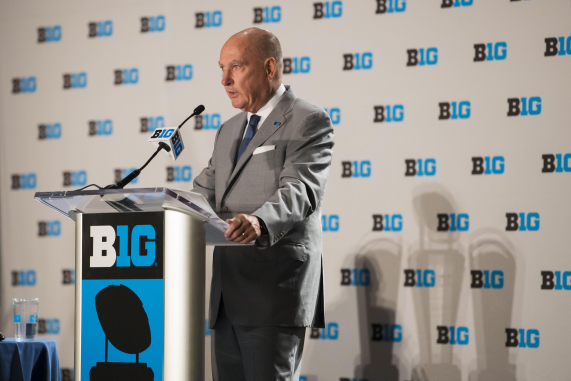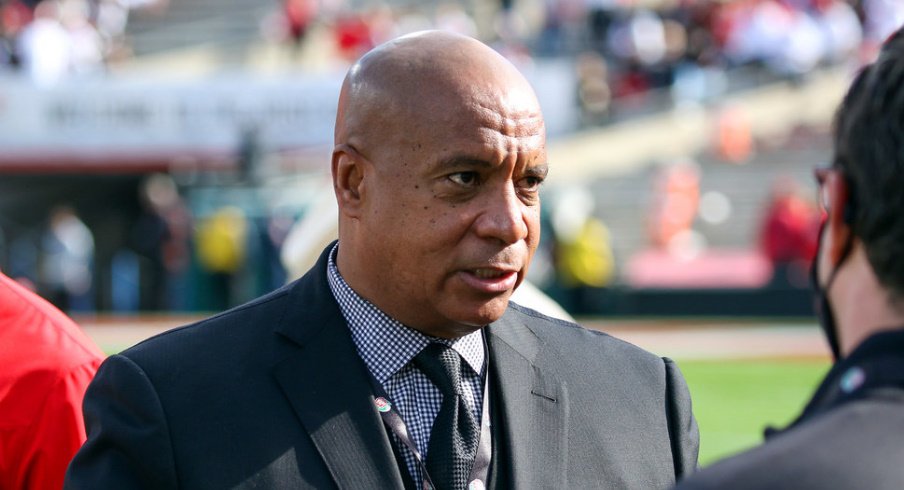I lacked the imagination.
In the Expansion Wars of college football, which began over a decade ago at this point, I had always been fairly skeptical about the potentiality of anything close to superconferences. Too many historical/cultural ties to surmount, too many logistical issues to sort out, and maybe just a lack of desire among conferences to blow up a system that had been stable for generations.
That proved incorrect! In large part because I failed to recognize that money is a thing and that even when a conference (like the Big Ten) has a lot of it, said conference would also like more of it, and is willing to do pretty much whatever it can to get it.
When Kevin Warren became commissioner of the Big Ten, his number one priority was to negotiate the conference's new television contract. Then COVID happened, and his number one priority suddenly became crafting a coherent and consistent response to the greatest public health crisis in a century. And he did a pretty crappy job at doing that, all things considered, so anyone expecting some kind of power move from a guy that was getting consistently okie-doked by the SEC and their commissioner Greg Sankey seemed likely to be disappointed.
Until yesterday.
For me, the bottom line of the Big Ten adding USC and UCLA to the conference is this: the B1G now has a significant sports media presence in the three largest markets in the entire country. Whatever else USC and UCLA might mean for "history" and "tradition" when it comes to football and basketball kind of pales in comparison to the Death Star of media rights that the Big Ten has assembled. It is expanding to as many potential viewers as possible in an effort to counter the perceived cultural cache from their main rival, the SEC.
So now there are two different ways to look at conference expansion.
The SEC has taken the prestige route. They want to make their conference look as shiny and impressive as possible, and they accomplish this by talking up their blue bloods that win championships, giving their garbage teams that don't a sense of conference pride, and by absorbing other brands that bolster the image of everyone. Texas and Oklahoma might not always be great or even good on the football field, but they have a fairly reliable and entrenched group of people willing to turn them on every Saturday.
Thus, this approach is heavily reliant on the fans of these brands sustaining growth, which, generally, isn't a terrible proposition. The SEC will be supported by ESPN/Disney, and (assuming at least two or three of the SEC blue bloods continue to be good in the future) the product will be elite. The problem here is that this necessarily requires continuing to incorporate other regional powerhouses under the SEC banner, because the viewership isn't going to grow organically.
That's what the Big Ten is trying to do. USC and UCLA are both hugely popular programs in their own right, but Los Angeles and California as a whole is an untapped media market that gives the Big Ten (and Fox) the ability to sell to new college football viewers that might've otherwise been sequestered because of time zones or a lackluster conference. It's the same approach that the Big Ten took with Rutgers and Maryland, and while neither schools have made much of an impact on the field of play, I don't think the conference is upset about the access to markets they provided.
Now the Big Ten can sell their media rights while claiming that they have a legitimate stake in every major media market in the country, for what will likely be the biggest combined media deal in college sports history. While the SEC is growing by adding fans, the Big Ten will grow by adding people to its footprint, and bet that Ohio State-USC will draw in the same kind of viewership as Ohio State-Michigan does (while also creating new regular watchers). The advantage of this is that it doesn't require a dedicated fanbase to grow an audience, just people to be advertised to.

Either way, both conferences are barreling towards "giant blob that absorbs everything in its path" status, and it'll be interesting to see what schools like Notre Dame decide to do in the meantime. Actually, by "interesting" I mean "morbidly fascinating," because at this point conference expansion isn't the Big Ten's problem, it's Notre Dame's. Which is on them.
Jim Delany's shrewdest act as Big Ten commissioner was to recognize the changing nature of college sports, and aggressively expand the conference both in terms of size and media presence. The rest of the country has spent the intervening decade trying to catch up (with varying degrees of success), but the jury was out on whether or not his successor would be up to the challenge of continuing that work.
Today it looks like, as far as conference expansion goes, Kevin Warren and the rest of the powers-that-be in the conference have stepped up to the plate and ensured the survival of the Big Ten for the foreseeable future.


